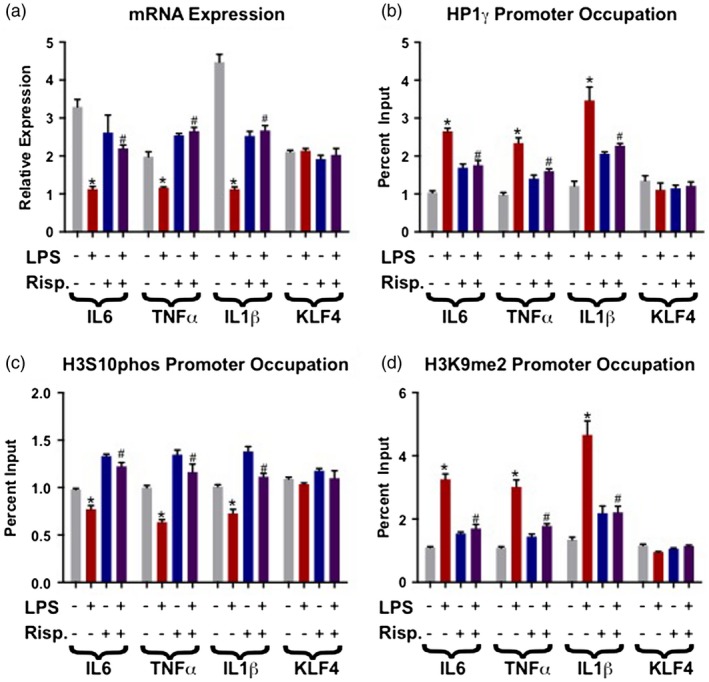Figure 1.

Risperidone (Risp) reverses the effects of lipopolysaccharide (LPS) on heterochromatin assemblies and mRNA expression at select promoters. In these experiments all cells were exposed to the differing drugs for 24 h, and treatment conditions remained the same between all graphs. (a) LPS significantly reduces mRNA expression of all three genes of interest [interleukin (IL)‐6, tumor necrosis factor (TNF)‐α, IL‐1β], but does not alter the negative control Kruppel‐like factor 4 (KLF)‐4. LPS + Risp co‐treatment reverses this effect, resulting in significant mRNA increases compared to the 24 h LPS‐only condition. (b) LPS treatment increases levels of the repressive epigenetic modification heterochromatin protein 1γ (HP1γ) along IL‐6, TNF‐α and IL‐1β promoters. LPS + Risp co‐treatment decreases HP1γ promoter occupancy when compared to LPS‐only. (c) LPS significantly decreases phospho‐H3S10 at the IL‐6, TNF‐α and IL‐1β promoters, an effect reversed by LPS + Risp co‐treatment. (d) LPS‐only significantly increased levels of the repressive epigenetic modification dimethylated lysine 9 of histone 2 (H3K9me2) at the IL‐6, TNF‐α and IL‐1β promoters, again with LPS + Risp significantly decreasing occupancy when compared to LPS alone. The following symbols were used to draw attention to specific Tukey post‐hoc analyses: *P < 0·05 vehicle versus LPS‐only; #P < 0·05, LPS‐only versus LPS + Risp.
